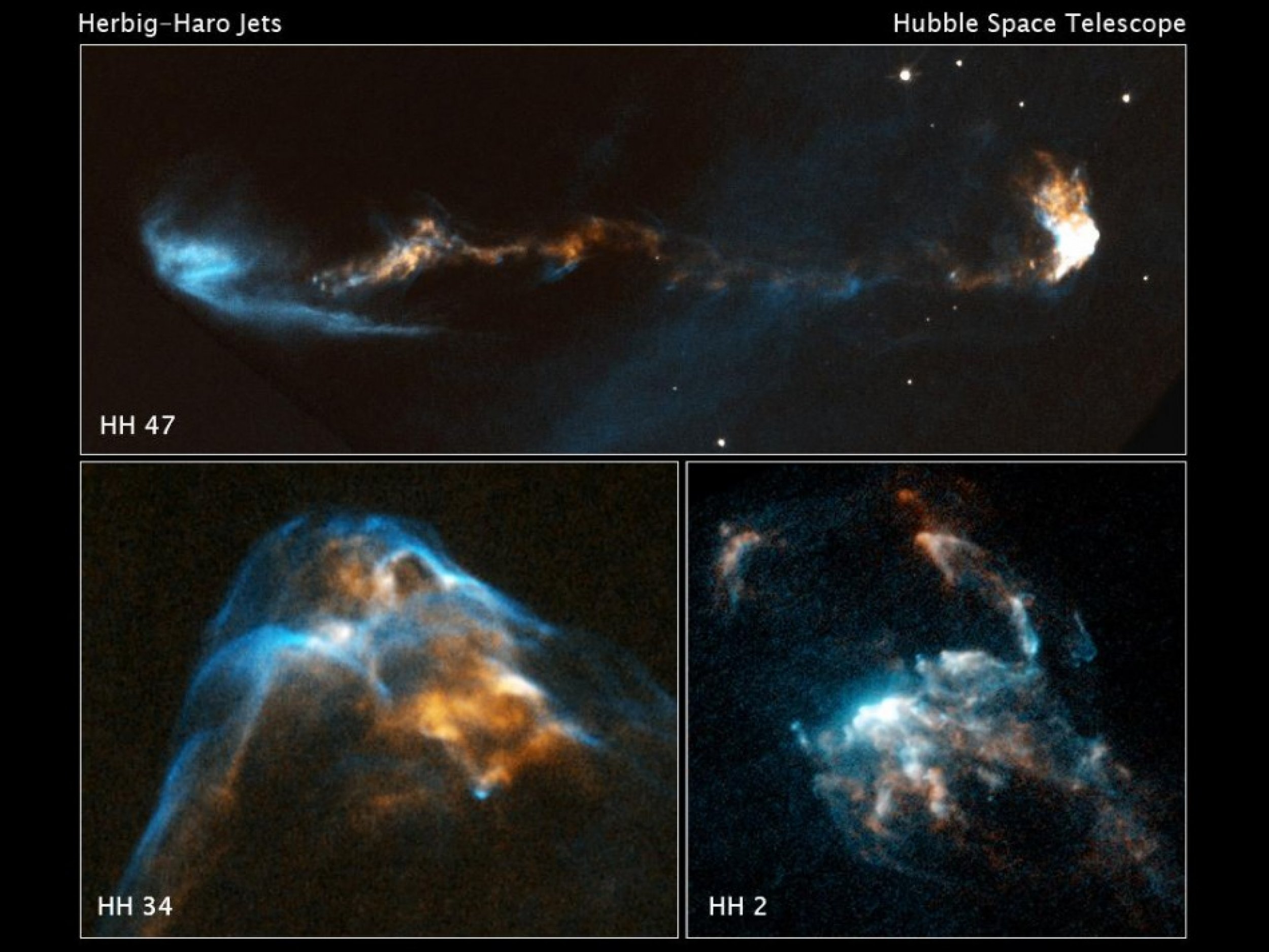Hubble Catches Energetic Jets of Glowing Gas From Young Stars [VIDEOS & PHOTO]
Astronomers have combines years of still images collected by NASA's Hubble Space Telescope to create movies that reveal never-before-seen details about the stellar birthing process.
The movies show energetic jets of glowing gas being expelled from young stars and sheds light on the formation of stars like the Sun about 4.5 billion years ago.
NASA said the jets are a byproduct of gas accretion around newly forming stars and shoot off at supersonic speeds of about 100 miles per second in opposite directions through space.
Hubble enables astronomers to see changes in the jets over just a few years' time.
Jets are an active, short-lived phase of star formation that lasts only about 100,000 years.
Astronomers aren't sure what role jets play in the star-formation process or exactly how the star releases them. However, the jets seem to work in concert with magnetic fields, as this helps to bleed excess angular momentum from infalling material that is swirling rapidly, NASA said.
Once the material slows down it feeds the growing protostar, allowing it to fully condense into a mature star.
NASA said a team of scientists led by astronomer Patrick Hartigan of Rice University in Houston, Texas, collected enough high-resolution Hubble images over a 14-year period and stitched together time-lapse movies of the jets ejected from three young stars.
Hartigan's team's results were published in the July 20 issue of The Astrophysical Journal.
The never-before-seen details in the jets' structure included knots of gas brightening and dimming over time and collisions between fast-moving and slow-moving material, creating glowing arrowhead features.
The twin jets aren't cast out in a steady stream, like water flowing from a garden hose, NASA said. Instead, they are irregularly launched in clumps.
For the first time we can actually observe how these jets interact with their surroundings by watching these time-lapse movies, Hartigan said in a news release. Those interactions tell us how young stars influence the environments out of which they form. With movies like these, we can now compare observations of the jets with those produced by computer simulations and laboratory experiments to see what aspects of the interactions we understand and what parts we don't understand.
Check out the spectacular sight in the movies below:

© Copyright IBTimes 2024. All rights reserved.












